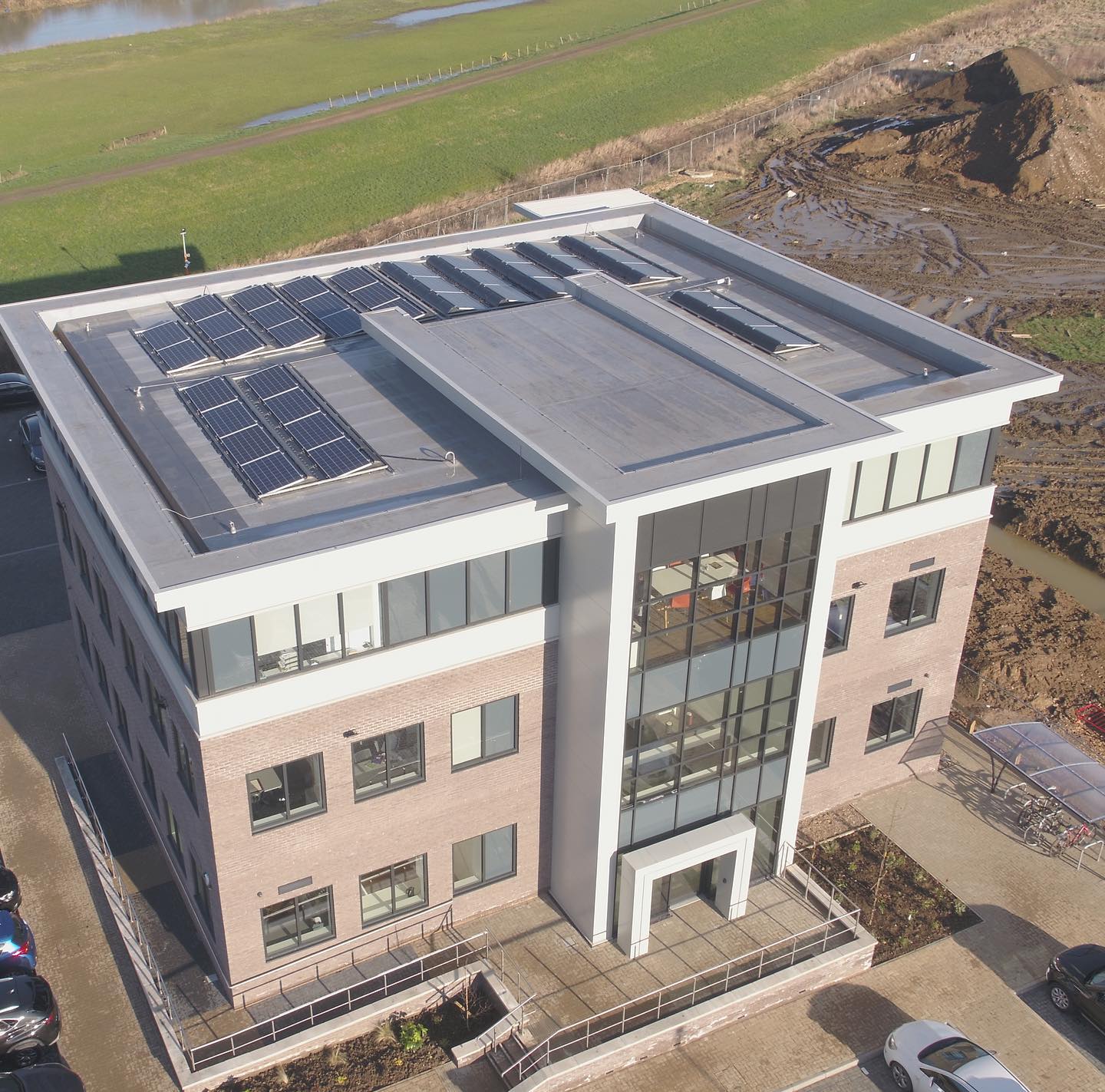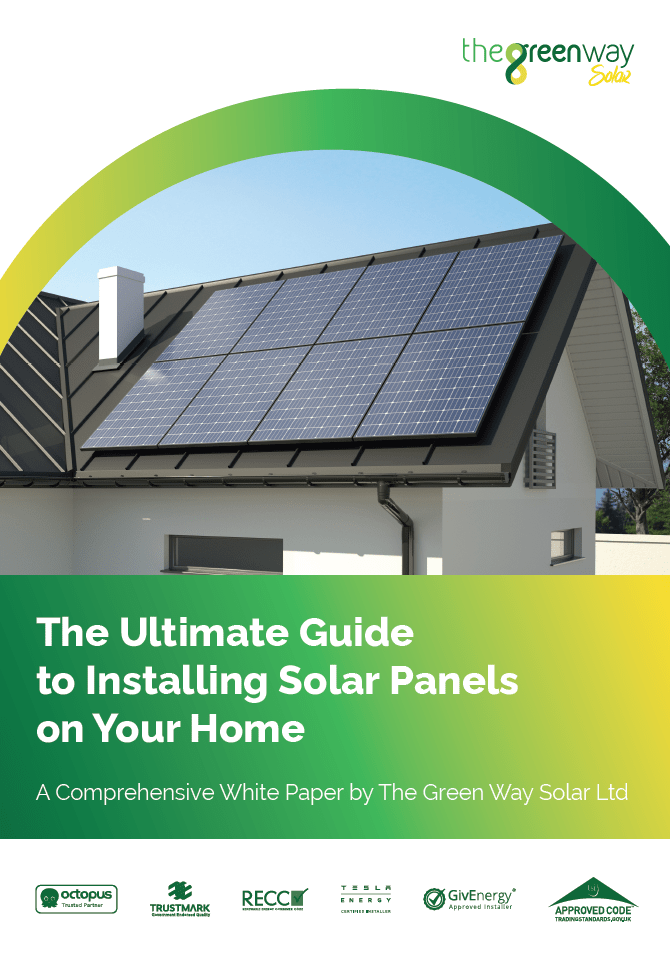There are lots of good reasons to use solar panels.
You will be:
- safe from load-shedding
- saving money on your electricity bills by reducing your dependence on expensive grid energy
- helping to reduce the production of carbon dioxide and other greenhouse gases
- earning money in the long run
Photovoltaics (often abbreviated as PV) is a simple and elegant method of harnessing the sun’s energy.
Solar panel electricity systems, also known as solar photovoltaics (PV), capture the sun’s energy using photovoltaic cells. These cells don’t need direct sunlight to work – they can still generate some electricity on a cloudy day. The cells convert the sunlight into electricity, which can be used to run household appliances and lighting.
Solar PV on its own will make a difference to your energy mix, saving you money and reducing your carbon footprint. However in most situations it is very difficult to optimise the self-consumption of the energy that has been generated without the use of additional technology such as batteries, immersion controllers or certain EV chargepoints. Remember, without the additional tech you can only consume the energy in the instant that your Solar PV array generates it, if you don’t use it you export it for a fraction of the cost of buying it back later.
Solar inverters, also called grid-tied inverters, convert the direct current (DC) electricity produced by your solar PV panels to alternating current (AC) electricity that can be used in your home and exported back to the grid.
Solar inverters also:
- ensure compliance with regulations about feeding electricity into the grid, for example by immediately disconnecting if there is a power cut
- maximise electricity production by constantly varying its resistance (load)
An inverter is an important integral part of your solar system. It’s like a control center for the system.
In short, to achieve peak energy generation from your solar panels, regular cleaning and servicing are strongly recommended.
While solar panels are generally low-maintenance, if you aim to maximise your array’s potential, servicing is crucial to keep your panels clean, free from damage, and operating at their best.
During the servicing process, our team can also pinpoint any potential issues before they worsen, potentially saving you money that would otherwise be spent on more extensive and costly repairs down the road.
At The Green Way Solar, we understand the importance of maintaining your solar investment, which is why we offer an annual cleaning and maintenance package. This comprehensive service includes a 23-point safety and quality check, designed to keep your solar installation operating at peak efficiency.
Key Features of Our Maintenance Package:
- Regular Cleaning: Solar panels can accumulate dust, leaves, and other debris that can obstruct sunlight and reduce efficiency. Our professional cleaning ensures your panels remain clear and fully functional.
- 23-Point Safety and Quality Check: Our expert team conducts an extensive review of your solar system, covering electrical connections, mounting brackets, inverter settings, and more to ensure everything is in top condition.
- Early Detection of Potential Issues: Regular maintenance helps identify and address minor issues before they become significant problems, saving you time and money in the long run.
- Maximised Efficiency: Keeping your solar panels clean and well-maintained ensures they generate electricity at their highest capacity, maximising your energy savings.
- Extended System Lifespan: Regular maintenance not only optimises performance but can also extend the life of your solar installation, ensuring you benefit from your renewable energy investment for years to come.
While solar panels require minimal maintenance, our annual package offers peace of mind and ensures your system continues to operate safely and efficiently. Investing in regular maintenance is a smart choice to protect and maximise your solar energy investment.
Panels have a performance guarantee of 25 years and could even last longer. Inverters have complex electronics and we provide for replacement of inverters every 10 years or so as technology improves these get better and cheaper. Batteries can last anywhere between 5 and 15 years depending on how the system is configured. As a rule of thumb, the more electricity used during the daytime the longer the batteries will last.
No, these systems are different. Solar hot water systems use the heat from the sun. Solar electricity uses sunlight. Solar Photovoltaic (PV) is a technology that uses sunlight to generate direct current (DC) electricity. Solar hot water panels usually have copper pipes running through them filled with water.
A kWp is the kilowatt ‘peak’ of a system. This is a standardised test for panels across all manufacturers to ensure that the values listed are capable of comparison.
When the solar PV panels are working they will over an hour convert the suns irradiance into energy, which is measured in kilowatt hours (kWh). A 3kWp PV system which is working at its maximum capacity (kWp) for one hour will produce 3kWh.
Yes, while solar panels significantly reduce your electricity bills by generating renewable energy for your home, you may still need to draw power from the grid during periods of low sunlight or high demand. However, with the right setup and energy management, your dependence on the grid and overall electricity costs can be greatly reduced. As a part of our survey and proposal process we will supply you with reports to help you to understand how self sufficient you could be based on your historic usage, future plans and the circumstances surrounding your property.
Yes, it’s important to register your solar panel installation. In the UK, this usually involves notifying your electricity supplier and ensuring your system is MCS (Microgeneration Certification Scheme) certified. This certification is crucial for eligibility for any export payment schemes such as SEG (Smart Export Guarantee. Your installer must be MCS accredited for the products that are being installed and should provide you with your MCS certification, Building Control Electrical Certificates and any DNO notices.
A Tesla Powerwall is a state-of-the-art battery system designed for home energy storage, allowing homeowners to maximize the use of their solar energy generation. With a typical lifespan of around 10 years, the Tesla Powerwall stands as a testament to Tesla’s commitment to quality and sustainability. Beyond its warranty period, the Powerwall is expected to retain at least 70% of its original capacity for power storage, which can vary based on several factors, including usage patterns and environmental conditions.
Extending the Lifespan of Your Tesla Powerwall:
- Optimal Usage: Adhering to recommended usage guidelines can significantly impact the longevity of your Powerwall. Avoiding extreme continuous power outputs and maintaining the battery within its ideal charge-discharge cycles can help preserve its life.
- Environmental Considerations: The environment in which the Powerwall operates plays a crucial role in its longevity. Installing the Powerwall in a location that minimizes exposure to temperature extremes can prevent capacity degradation over time.
- Regular Monitoring and Firmware Updates: Tesla continuously improves its products through software updates, which can enhance the functionality and efficiency of the Powerwall. Keeping your system updated and monitoring its health through the Tesla app can pre-empt potential issues.
As of the latest information available, Tesla has officially released a Powerwall 3 in some parts of the USA and there are currently no dates available for UK release. The Tesla Powerwall 2 remains the latest available model in the UK, offering robust energy storage solutions for residential use. Stay tuned to our website for any updates on new releases.
The payback period for a Tesla Powerwall in the UK varies based on several factors, including your energy usage, the size of your solar PV system, electricity rates, and whether you’re taking advantage of smart tariffs. Typically, homeowners can expect a payback period of around 8 years, with substantial savings on energy costs over the lifetime of the unit.
It’s recommended to have your solar installation professionally inspected at least once every few years to ensure everything is functioning correctly and safely. Additionally, monitoring your system’s performance can help identify any potential issues early on.
In many cases, installing solar panels on your house falls under ‘Permitted Development’ in the UK, meaning you don’t need specific planning permission. However, there are exceptions, especially in conservation areas or for listed buildings, so it’s always best to check with your local planning authority.
For more detailed guidance and personalised advice on incorporating solar energy solutions into your property, please contact us at The Green Way Solar. Our team of experts is here to support your journey toward sustainable energy use.












